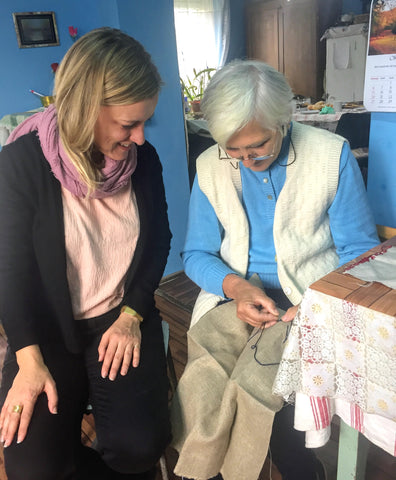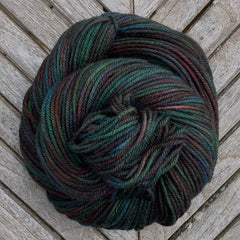



R: Transylvanian Hungarian vest.


Sarah says:
“I am deeply curious about the world, how the things people make reveal who they are, and the culture of textiles: what we wear on our bodies and use in our homes. I excavate and curate the past and the present by stitching and cutting photographs, curling back the paper to make the images three-dimensional. I use photos from my daily life as an American living in Amsterdam and my travels working with embroiderers in Eastern and Southern Europe.
My work is a process of wayfinding, mapping, and place-making, noting a street giveaway now broken and left for trash or a dropped braid of hay as a synchronistic sign along the way. I also use images of 19th-century clothing, interlacing the contours of memory, cultural emblems, and the reality of living in a disposable visual culture. A ribbon is a line, is a seam, is a silhouette. A bow is an ‘X,’ is a cross-stitch, is a signature. A curtain is a blouse, is a veil, is a curtain.”

Postcard in a window in Amsterdam
The Embroiderer - Spring 2022 Story Collection includes four mini skeins (each approx. 25g) of worsted weight 100% superwash wool milled in the US. The collection will be available to order from our web shop starting on Sunday, May 1 at 9am PST here: https://quillandquiverfiber.com/products/the-embroiderer-spring-2022-story-collection
The colorways in the collection are (clockwise from top left):


|
Dead of Night - A vibrant black with hints of emerald green, peacock blue, maroon and violet. This yarn reads as black from a distance, but up close is a kaleidoscope of color. |
 |
Paprika - The traditional red of Kalotaszeg embroidery. A bright cherry red with pops of fuschia and dark rusty red. |
 |
Alpine Green - Inspired by the natural alpine landscape of the region, this bold base of shamrock green has cerulean blue and parrot green accents. |
 |
Sunburst - This canary yellow has soft coral and cantaloupe highlights and is often used as an accent color in Kalotaszeg embroidered aprons. |
Sources for more information:
-
Threadwritten blog: https://threadwritten.com/journal
- Threadwritten travel tours: https://threadwritten.com/retreats
-
Sarah’s upcoming workshops: https://threadwritten.com/workshops-online
-
Sarah’s artwork: https://www.sarahpedlow.com/
-
Read Sarah’s article about her first trip to Romania in Selvedge Magazine 106 Cloth and Identity, May/June 2022: https://www.selvedge.org/blogs/selvedge/hungarian-written-embroidery?_pos=1&_sid=c010346fd&_ss=r
- Smithsonian Folklife article on the KALOTASZEG region of Transylvania (Romania): https://festival.si.edu/2013/hungarian-heritage/the-kalotaszeq-region/smithsonian
All images courtesy of Sarah Pedlow. Copyright: Quill & Quiver Fiber, 2022. All Rights Reserved.

Leave a comment